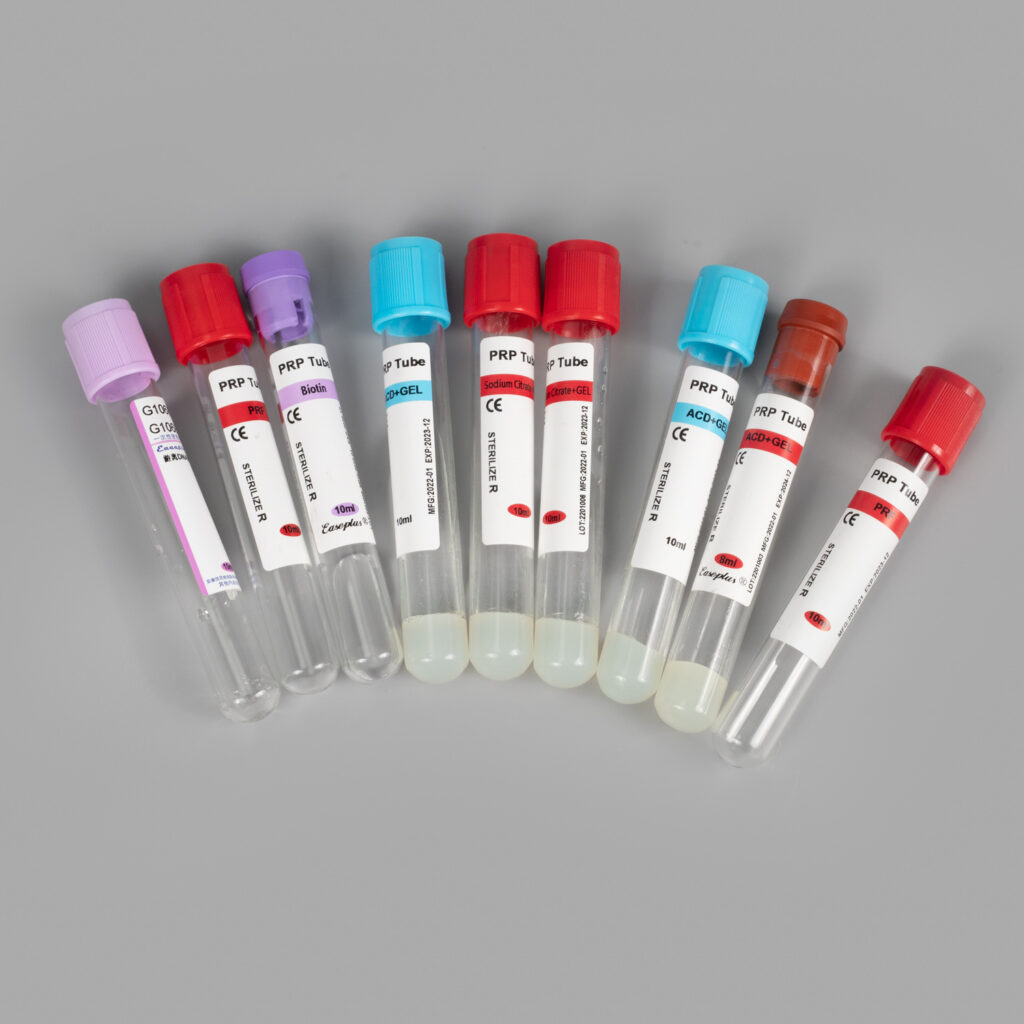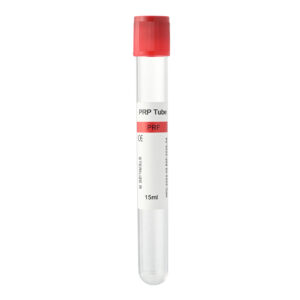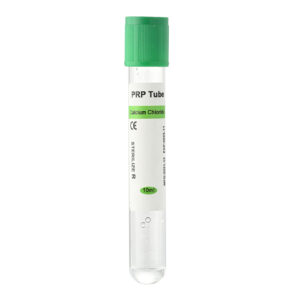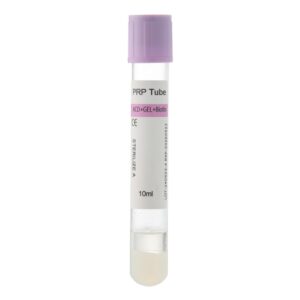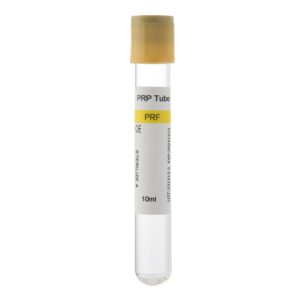During the preparation of Platelet-Rich Plasma (PRP), selecting the correct colour of the blood collection tube is crucial for successful and effective treatment. The colour of the tube indicates the type of additives inside and their intended purpose. In PRP therapy, the choice of collection tube directly impacts the blood separation process and the quality of the final PRP product. Therefore, understanding the differences and uses of different coloured tubes is essential for every medical professional.
Standard Colors of PRP Collection Tubes and Their Significance
In the PRP collection, the most commonly used tube colours are yellow and red. However, other tube colours also have specific uses. Below are the common tube colours and their significance:
1.Yellow Cap Tube (ACD or Gel)
Healthcare providers commonly use yellow cap tubes for PRP collection since they contain ACD (acid citrate dextrose), which includes citric acid, sodium citrate, and dextrose. This anticoagulant prevents blood from clotting, maintaining platelet viability, which ensures the quality of the PRP. Additionally, these tubes may contain a separation gel that aids in isolating platelets from other blood components, making it easier to obtain high-concentration PRP. These tubes are commonly used in dental, cosmetic, and sports medicine procedures that require Platelet-Rich Plasma.
2.Red Cap Tube (No Additives or Clot Activator)
Red cap tubes usually contain no anticoagulants or may contain a clot activator. They are suitable for rapid serum collection. Although not as commonly used for PRP collection as yellow tubes, some PRP systems use red tubes for initial centrifugation to separate serum and red blood cells before a second centrifugation to extract PRP. Since red tubes do not contain anticoagulants, healthcare providers prefer them for situations requiring minimal serum separation.
3.Purple Cap PRP Tube (EDTA Anticoagulant)
Purple cap tubes contain EDTA as an anticoagulant and are typically used for complete blood count (CBC) tests to prevent clotting. While not used for PRP preparation, healthcare providers commonly use them in other haematological tests to maintain blood component stability.
4.Green Cap PRP Tube (Heparin Anticoagulant)
Green cap tubes contain heparin, an anticoagulant for rapid blood testing, such as blood gas analysis or specific biochemical tests. However, heparin may interfere with platelet activity, so they are generally not used in PRP preparation.
5.Blue Cap Tube (Sodium Citrate Anticoagulant)
Blue cap tubes contain sodium citrate, primarily used for coagulation testing. Although effective in preventing clotting, this anticoagulant can affect platelet function, making it less suitable for Platelet-Rich Plasma preparation.
6.Gray Cap Tube (Sodium Fluoride and Potassium Oxalate)
Grey cap tubes typically contain sodium fluoride and potassium oxalate, primarily used for glucose testing, as they prevent glycolysis. Due to the nature of these anticoagulants, grey tubes are unsuitable for PRP preparation.
Why Choosing the Right Tube Color Matters
In PRP preparation, the colour of the collection tube correlates with the type of additive it contains, which significantly affects platelet extraction efficiency and quality. The ACD anticoagulant in yellow cap tubes prevents blood clotting, thereby maintaining platelet viability and ensuring the efficacy of the final Platelet-Rich Plasma product. An inappropriate tube, such as one containing an unsuitable anticoagulant, may compromise platelet activity and reduce treatment effectiveness.
Additionally, tubes with separation gels can enhance platelet separation efficiency by concentrating the platelets in the plasma, resulting in a higher PRP concentration. Therefore, selecting the correct tube is not merely a procedural detail but a vital factor directly influencing treatment outcomes.
How to Choose the Right Collection Tube for PRP
Before collecting PRP, medical professionals must select the appropriate collection tube based on treatment requirements and the specific equipment used. The yellow cap tube is the safest and most reliable option for most Platelet-Rich Plasma treatments, as it contains an appropriate amount of anticoagulant to maintain platelet viability. Red cap tubes may be considered for certain specialized tests or when additional serum processing is needed.
Choosing a PRP collection tube requires adherence to the medical facility’s standard operating procedures (SOPs), considering equipment manufacturers’ recommendations and treatment requirements. This ensures the collected blood can be processed optimally to achieve the desired therapeutic effect.
Conclusion
In Platelet-Rich Plasma therapy, choosing the correct tube colour plays a crucial role in the overall success of the treatment. Yellow cap tubes, containing ACD anticoagulant and separation gel, are the most commonly used and best suited for Platelet-Rich Plasma preparation. Red cap tubes are also used in certain procedures. Medical professionals must select the most appropriate tube based on the clinical needs and treatment protocols to ensure high-quality PRP with optimal efficacy. Proper tube selection enhances the success rate of treatment and provides patients with a better therapeutic experience.

